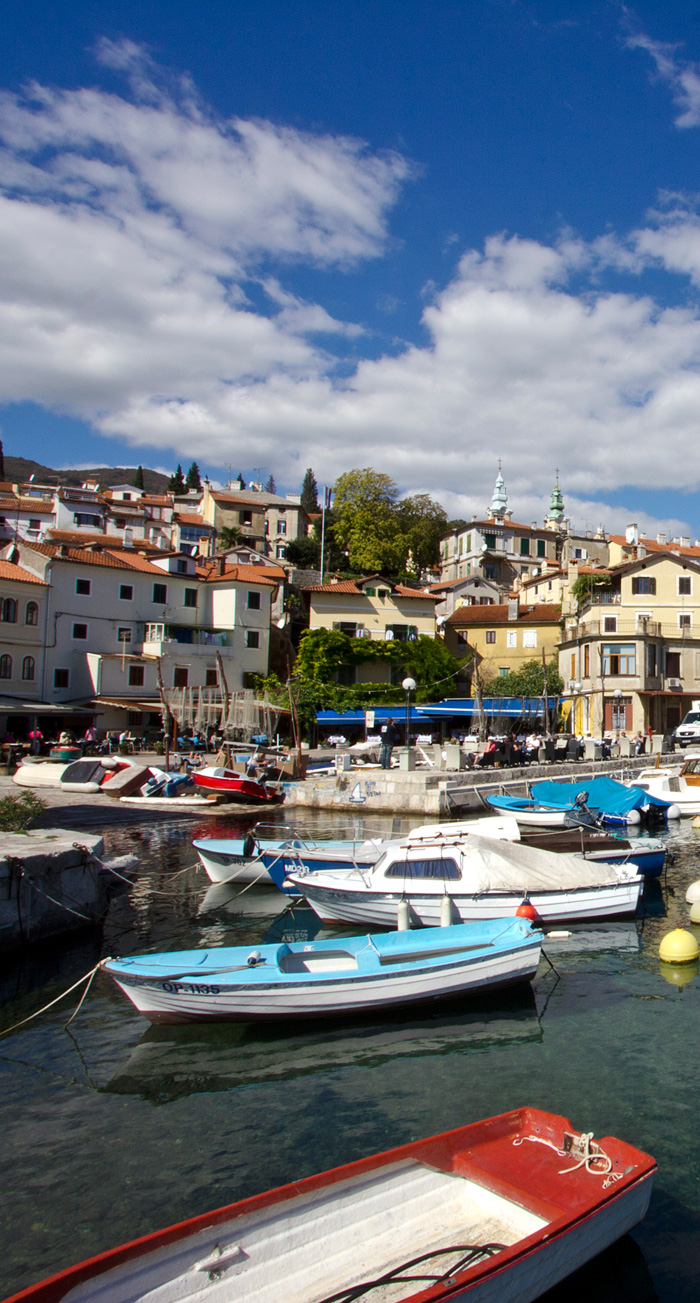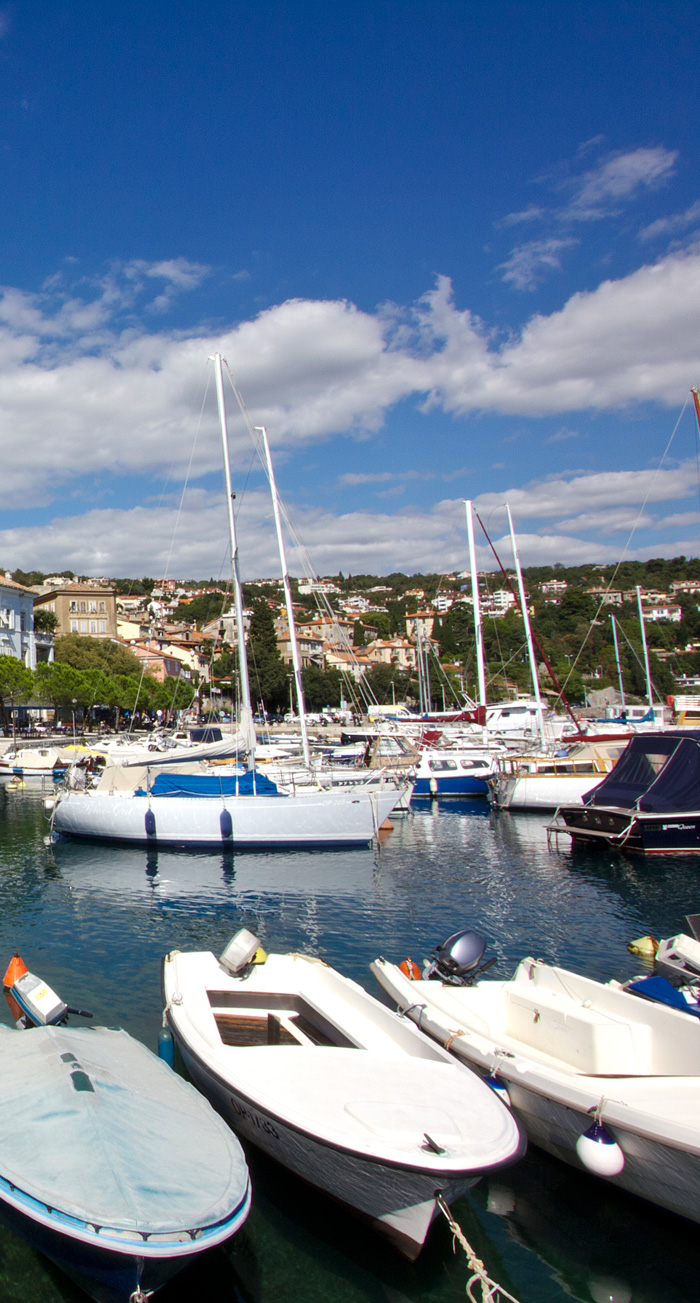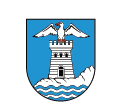History of Opatija
804.1449. 1465.1506.1528.1555.1615.1630.1689.1838.1844.1850.1857.1869.1870.1871.1873.1882.1883.1884.1885.1887.1888.1889.1890.1891.1894.1895.1896.1898.1900.1901.1902.1903.1904.1904.1905.1906.1908.1909.1910.1911.1912.1913.1922.1928.1929.1930.1931.1933.1934.1935.1936.1939.1941.1946.1950.1956.1957.1958.1963.1966.1968.1971.1974.1977.1981.1984.1986.1990.1991.1992.1999.2000.2001.2002.2003.2004.2005.2006.2007.2008.2009.2010.2011.2012.Liburnians were excellent sailors. Ships were made of planks that were not fastened by nails, but by a special technique of "sewed" cords. Their large warships later took over the Romans for their war fleet. Liburnians with their ships sailed&traded to the north of Africa, Asia, Greece and Sicily and travel around mainland across Apennine peninsula and north-western Balkans. Liburn's beliefs are likely to be concentrated around the cult of ancestors, especially the cult of the skull. An important role had a Sun cult and female deitiyes - Ansotica, Ika, Irija and Sentona, and the god Silvan.
The Story of Opatija is closely related to the St.Jacob’s Church and its property, which will later become - the city of Opatija ("opatija" is croatian word for "abbey"). St. Jacob is the patron saint of pilgrims and travellers, druggists, tanners, peasants, fruit-growers and...Opatija. St. Jacob’s Day – July 25th, is celebrated as the Day of the City of Opatija (according to the decision of Opatija’s CC from March 27th 2008.)
Century of abbey's origin (12th century) is taken arbitrary, assuming that the church was built on the site of the former shrine to another deity. Whether Apollo or Liburnian goddess of love, health and fertility, Anzotica, we can only speculate. But - love has been always the most apereciated guest in Opatija, in area named Liburnia according to an ancient tribe that lived here thousands years ago.
Liburnians were contemporaries of Italo Etruscans and Levant's Phoenicians, and that's an earliest clearly confirmed and described ethnogroup on Croatian soil, traced from 9th cent BC. Liburnians' special characteristic is the status of women. An important role had matrilineal relations, and women kept alive the cult of ancestors. Liburn's traces are visible in the genes of today's inhabitants of Kvarner (haplotypes Eu9 and Eu10) and in the local dialect.- 804.
804 Croatian duke Borna became a leader of Liburnia (dux atque Dalmatiae Liburniae), part of the Croatian principality and Kingdom from1063. Since then Liburnia, together with Istria, is ruled by a few German noble families - Andechs-Meran (by which the whole field from river Rasa to river Rjecina has been called Merania or the Coastal land), the counts Devin and then Walsee. In 14th century, at the time of Devins, wider abbey area became part of the powerful fiefdoms called „Kastavska gospostija“, that spread from the eastern border around Brsec at the west to the borders of Rijeka municipality to the east.
- 1449.
Church and Monastery of St.Jacob are first mentioned in the "Liber civilium", where the Rijeka's public notary Anton Reno de Mutina in 1449 recorded "monk Jacob and his predecessor Radman at St. Jacob - Abbazia St Jacobi al Palo / di Preluca." In Bull of Pope Nicholas V in the 1453 has been mentioned "Abbate sancti Jacobi ad Palum - Abbey St. Jacob at pillar" which are interpreted as a) palum = column for seizing the vessel, b) the name given in memory of Al Palo in Spain where was the original church. Two stone inscriptions on the facade of Church proof of the works on the building: first, on the lintel of the portal from 1506 during time of monk Simon (1506 DIE 21. IULI SYMO ABBAS FIERI FECIT"), and second, on the board over the transom from 1793. The last major enlargement was in 1937.
Church and Monastery of St.Jacob are first mentioned in the "Liber civilium", where the Rijeka's public notary Anton Reno de Mutina in 1449 recorded "monk Jacob and his predecessor Radman at St. Jacob - Abbazia St Jacobi al Palo / di Preluca." In Bull of Pope Nicholas V in the 1453 has been mentioned "Abbate sancti Jacobi ad Palum - Abbey St. Jacob at pillar" which are interpreted as a) palum = column for seizing the vessel, b) the name given in memory of Al Palo in Spain where was the original church. Two stone inscriptions on the facade of Church proof of the works on the building: first, on the lintel of the portal from 1506 during time of monk Simon (1506 DIE 21. IULI SYMO ABBAS FIERI FECIT"), and second, on the board over the transom from 1793. The last major enlargement was in 1937.
The monastery and the church was ruled by Benedictines, Augustinians, Jesuits, olivanes, friars, and at the end again, "Ad Maiora Dei Gloriam" by jesuits from 1960 - the largest Catholic order, from 2008 under new general Adolfo Nicolás Pachón. - 1465.
From the end of the14th century aristocratic family Walsee had been present in central Istria and Rijeka, where they inherited the family of Devin, who was left without male successor. The same later happened to them and their possessions were taken over by well known acquaintances - the Habsburgs. After the death of Wolfang v. Walsee, Habsburg family took over Rijeka, Kastav, Veprinac and Moscenice.
September 1st 1465 - Wolfgang Walsee handed over Rijeka along with Kastav, Veprinac, Mošćenice and Gotnik to Frederic III. Habsburg as a birthright inheritance. - 1506.
- 1528.
Lovran was the port through which went cater to besieged Klis in Dalmatia, defended by Peter Kruzic.
- 1555.
- 1615.
As a revenge for the defeat in battle against Croat Krsto Frankopan at San Servolo, near Trieste, Venetian providur arrived with ten galleys and fifty armed vessels to Moscenice. Regardless of the fierce attacks, citizens of Moscenice, backed by the 24 german soldiers, defended the city.
- 1630.
- 1689.
- 1838.
The coastal road Rijeka-Opatija-Volosko was completed. Prior to that, traffic from Rijeka to Opatija went through Matulji.
Ivan Tomasic was the owner of the first restaurant in Opatija.
Emperor of Saxony, Friedrich II. August (1797 .- 1854.), a passionate botanist, was travelling around the east coast of the Adriatic, including Liburnia. He had accomodation in Lovran, by coach came up to Poklon, and by foot to the top of mountain Ucka. Itinerary of the whole expedition has been printed in Trieste in 1841 by renowned botanist Bartholomew Biasoletto, born in Vodnjan. - 1844.
Villa Angiolina, that marked the beginning of tourism in Opatija was built by Rijeka's wholesaler Iginijo Scarpa. Villa is placed amid botanical garden as quality work by an unknown architect, now reconstructed on the basis of ground-plan from 1886. It refers to the classical spatial disposition, designed by the principle of the golden cut, and the use of modules.
- 1850.
Eugen Kumičić was born in Brsec. During eighties of 19. century, he was most read Croatian writer. Kumicic wrote novels " Astonished wedding guests“, „Olga and Lina“, „Zrinski –Frankopan's Plot".
Croatian Banus Josip Jelačić with his wife Sofia Stockau visited Opatija and stayed in Villa "Angiolina". - 1857.
- 1869.
- 1870.
- 1871.
- 1873.
Railways came to Matulji and thus opened the path for the development of tourism in Opatija and Lovran. Namely, Viennese gentlemen went by carriages and later tram from "matujski stacion" all the way to Lovran. Station Opatija-Matulji has another feature that distinguishes it from any other station on Croatian Railways - next to a small beautiful vestibule with the cashier the station has a special royal lounge, which has been used for rest of travelers, members of the royal family and their guests.
- 1882.
Friedrich Julius Schüler, the Managing Director of Southern Railways started the construction of the villas and hotels in Opatija and Lovran, and was responsible for the unique lungomare and parks (the Company has engaged Carl Schubert, director of the Viennese Emperial-Royal Society for the construction of parks). Therefore with full right is stated that the real Opatija’s tourist history begins 1882, when private Cesar-royal Society of the Southern railway from Vienna, led by Julius Schüler purchased first land with Villa Angiolina in Opatija.
There, in the park Angiolina today stands FJ Schüler’s bust, the work of the sculptor Hans Rathausky. - 1883.
Opatija's first guide was published in 1883 in Vienna with the title Abbazia, Idylle von der Adria. The same year was published Abbazia und seine Umgebung by Noe Heinrich, who in 1884 published Tagebuch aus Abbazia (Diary from Opatija), Joseph Rable printed Curort und Seebad Abbazia (Spa and the bathing beach in Opatija), and Peter von Radics simple titled book - Abbazia.
- 1884.
- 1885.
The hotel Kronprinzessin Stephanie is opened, named after crown princess Stephanie, wife of Rudolf of Habsburg, and they both appeared at the opening. Architect Franz Wilhelm offered all luxury to the guests of the hotel, from the central heating to the pool, and, later, the cinema hall, which has been connected to the central part of the hotel. Thanks to a representative form and position, the hotel was chosen, amongst all, by James Joyce, Emperor Franz Joseph I., and Josip Broz Tito. The history of name changing of the Hotel, interestingly enough, reflects the changes of the entire political history of Opatija. Italians changed its name to Regina Elena, as was the wife's name of king Victor Emanuel III, since 1945 until 1948 hotel’s name was Moscow, after the break-up with Stalin it changed its name to Central. By fall of Ranković and centralism in 1966, the hotel gets today's name - Imperial.
The climate station was built in Opatija, to monitore the main meteorological elements.
The company "Abbazia" was founded as a branch of Austrian tourist club in Vienna (Österreichischer Touristenclub-Sektion Abbazia).
Beginning of construction of a coastal road from Volosko via Opatija to Lovran at the initiative of the Association for the embellishment of Opatija (Abbazianer Verschönerungsverein). - 1887.
- 1888.
- 1889.
The Austrian government officially declared Opatija as the first climatic seaside resort on the Adriatic. Sculptor Hans Rathausky from Graz finished the fountain - "Helios and Selene", personification of the Sun and the Moon, near the St.Jacob’s church.
The eight kilometers long,northern part of coastal promenade (Lungomare) from Volosko to Opatija, was completed.
Croatian cultural home "Zora" was opened. - 1890.
- 1891.
"Golden Book" of Opatija's guests from 1891: Stephanie - r.Koburg, widow of Rudolf Habsburg, Count Otto, nephew of Francis Joseph I, Dr. Julius Glaxo, balneologist - Kurkomission Abbazia, 1887. lived in Villa Haas (today Ariston) and annex I (now a hotel Milenij St. Jakob), Dr. Theodor Billroth, a world-known surgeon, Dr. Leopold Schrötter von Kristelli, from Department of laryngology in Vienna who recognized therapeutic qualities of aerosols in Opatija, Dr Rudolf Virchow, the founder of cellular pathology, Gyula Széchenyi, Baroness Emmy Reinleiny, Margareth Countess Harrach, Countess Angelique Keglevich, Fürstin Eleonore Auersperg...
- 1894.
In Opatija met Emperor Franz Joseph Habsburg and Prussian Emperor Wilhelm II & his wife Augusta Victoria, which has stayed in Villa Amalia. Prussian emperor arrived from Rijeka 21.03. by yacht "Cristobal", and 29.03. met with Franz Joseph I. New York Times reported about the meeting with kisses.
Looking for health, in Opatija came famous Russian writer Anton Pavlovich Chekhov. - 1895.
- 1896.
All hotels and public buildings in Opatija got the electric power.
- 1898.
- 1900.
Pavillon für eine Conditorei (today Pavilion Šporer) is opened, designed by renowned architectural office BAUQUÉ & PIO from Vienna. King of Opatija’s desserts became Emile Gerbeaud (1854. - 1919.), Swiss by birth, a great culinary artist who bought a coffee shop Kugler, the owner of the factories for the production of chocolate products in Budapest and Rijeka, the owner of patents for industrial production of chocolate products, author of a large number of eternal sweet creations that competes equally with Sacher’s and Dobosz’s.
The first stone of the Austrian imperial Clarks’ spa building was put in the ground. 1896 had been announced a competition for its design and construction. The Viennese jury awarded architect Max Fabiani (1865.-1962.)with first prize and realization of the project - 1901.
- 1902.
In Opatija was a famous dancer Isadora Duncan, which later wrote in her memoirs that the inspiration for her hands’ movements came by watching leaves of Opatija’a palms.
Car rally Opatija-Nice was organized.
In Opatija came Bertha von Suttner, a famous writer and fighter for peace in Europe. 1905 she received the Nobel Peace Prize. - 1903.
- 1904.
Emperor Franz Joseph I. visited Opatija for the second time.
The foreign ministers Goluchowsky (Austro-Hungary) and Tittoni (Italy) held a conference in Opatija.
The Evangelical church, designed by Carl Seidl was built. At its opening was the Norwegian-Swedish King Oscar II., who stayed in Opatija for three months.
The construction of the Municipality and the Tribunal buildings began, both designed by Viennese architect Carl Seidl.
In Opatija spent the summer young Vladimir Nabokov ("Lolita"). - 1904.
18.04.1904. in Opatija was born Carolus Iulius Oscar Gervais, whom we remember simply as - Drago Gervais, one of the best dialectal poet of all time. His "Chakavian verses" has been published in dozens editions. Poems of Drago Gervais have the magic of unforgivableness. once learnt in childhood, they ate remembered through whole life. As a director of CNT I.pl Zajc he use to drove cartoons in of his collaborators in his theater diaries during long meetings. One of them was recognized maestro Boris Papandopulo.
Drago Gervais died on the way to hospital in Ljubljana after a tragic fall from a balcony in Sežana. Great poet of Liburnia was buried solemnly in his native Opatija on July the 3rd 1957. - 1905.
Ignatz Brücker had 140 pairs of horses for towing cabs from the train station in Matulji to Opatija and back.
During Easters holidays Gustav Mahler wrote in Opatija large part of his 6th symphony. Mahler was the director of the Vienna Opera from 1897. until 1907., and later on the conductor in New York's Metropolitan Opera House. - 1906.
Initiative to build a large, representative catholic Church initiated the former Minister-Viennese and Opatija municipal representative Baron Franz von Reyer, the owner of Villa "Irene", a nobleman, who with his wife Irena Leitgeb from Vienna moved to Opatija. Design preparation for a new church, The Annunciation of Mary was entrusted to Carl Seidl (1858-1936). The construction started in 1907, and at the same time began and the construction of monastery.
In Opatija was published "Kur-und Badea-Zeitung der österreichischen Region" ( “Newspaper of Health & Bathing resort of Austrian Riviera").
1891. Josef Grusser built the hotel "Bellevue", and his son built hotel "Palace" from 1906 to 1908, one of the most attractive facilities in Opatija. - 1908.
The building of the Municipality building was completed at conjunction Volosko - Opatija.
An impressive hotel - Hotel "Palace" was finished at Slatina.
Opatija’s architect Sandor Neuhausler extended the Conditorei who became Glacier. Electric tram started on line Matulji-Lovran-Opatija.
In Opatija was born Leo Henryk Sternbach (Opatija 1908.-1921.,His father had the pharmacy in the Bazar Mandria), a chemist with 214 patents, which in his 97 years enormously enriched pharmacy company Hoffman-La Roche's income inventing tranquilizers. Even the Rolling Stones sang the song about Sternbach’s invention - Valium. Sternbach is declared one of the 25 most influential Americans of the 20th century by poll in U.S. News & World Report 2003. - 1909.
- 1910.
- 1911.
The aquarium is opened next to the hotel "Kronprinzessin Stephanie" (Hotel "Imperial"), more beautiful than the one in Rijeka and at Venice’s Lido.
The coastal promenade (Lungomare) is completed, 12 kilometers long, from Volosko to Lovran.
Tomáš Masaryk (1850 - 1937), Czech philosopher and statesman stayed with his wife in Lovran. He became the first president of independent Czechoslovakia 1918.
The first casino in Opatija is opened in the villa "Amalia", which worked until 1913.
In front of the park Angiolina was prepared&planned space to build a multi-functional Healing Palace (Kurpalast), for which was announced the tender (1911). Architects Marcel Kammerer, Otto Schönthal and Emil Hoppe designed the palace with a dance and concert halls, swimming pool with artificial waves, shops and cafes, but World War I interrupted the vibrant development of Opatija and project remained unrealized. After the War and the Rapal treaty in 1920., Istria and Opatija became the part of Italy, and instead of the Palace, Opatija has got an open air theater. - 1912.
- 1913.
Opatija had a dozen hotels, 44 boarding houses, 83 villas and 5 swimming places. Together with Lovran went over Karlovy Vary according to the number of tourists. Rijeka had twenty hotels for business people and for people who were waiting "Cunard Line's" ships for America. Instead of medicinal baths which were burnt down, close to hotel Quarnero" an impressive Crystal Hall was built (total of 800 m2).
- 1922.
- 1928.
- 1929.
First Mountain car race on Ucka was held on September 22nd of 1929. It was the first real car competition in area, and attracted great attention. Start was in Matulji. How big was the attraction, testifies the fact that between eight and nine a.m. 300 coffees was sold, for which “prices were rising with altitude.
- 1930.
- 1931.
The Summer Stage in Opatija is opened with luxurious performance of the opera "Aida" by Giuseppe Verdi. The theater had a space for 6000 people, and the stage had a 1000 m2.
- 1933.
- 1934.
- 1935.
- 1936.
- 1939.
- 1941.
The new Club headquarters of the rowing club in Opatija's port were raised.
- 1946.
Josip Broz Tito, Yugoslavia's longtime president was the first time in Opatija. He gave a speech from the balcony of hotel "Moscow" (“Imperial"). Almost three decades he had one of thirty residences in the villa "Istranka" – now the headquarters of the "Adriatic Club International, the largest chain of marinas in the Mediterranean.
- 1950.
- 1956.
- 1957.
The new Open-air theater is erected, designed by architect Neven Segvic.
Thalassotherapie Opatija was founded on the tradition of health tourism as Liburnian Institute of Thalassotherapy for whose launch has been largely responsible professor doctor Cedomil Plavsic, on the traces which left Max Joseph Oertel, Julius Glaxo, Theodor Billroth, Antun Felix Jacic ... - 1958.
The first "Festival Opatija" was held in the Crystal Hall of Hotel Kvarner. The winning song was the song sang by Zdenka Vuckovic i Ivo Robić: "Little Girl" (Milutin Vandekar / Alka Ruben, 1958). The duet with 16-years old Zdenka Vuckovic was the absolute winner by voting of listeners of all Yugoslav radio stations.
- 1963.
Hotel Adriatic, by the architect Andrija Cicin-Sain and his team was completed. Hotel "Adriatic" is the first hotel built in Opatija after the Austro-Hungarian era. Room of hotel "Adriatic" has been accepted by experts as a novelty in the hospitality industry.
"Casino Rosalia" was opened in Opatija - the first casino in Eastern Europe. - 1966.
- 1968.
- 1971.
Hotel "Adriatic II" was completed (architect Branko Znidarec), along with a congress hall, which significantly influenced the volume of the winter tourism. Large conference hall of GH Adriatic, was opened at the FIS Congress of the World Ski Federation. The “legend” of Adriatic from the ’70 and ‘80 was Mihovil Cuk Delic.
- 1974.
- 1977.
- 1981.
- 1984.
Dusko Jelicic Dule and carnival group DS & PD together with Voloscans rolled down to the main road of Opatija on ball bearing vehicles. That was the beginning of the traditional Opatija BALINJERADA – masked racing in three categories of ball bearing vehicles (karici & vozici &monopatini )..
Legends of Balinjerada: Gojko Ujdurović, Rudi Radej, Đino Krota, Eligio Ujčić, Arnaldo Malnig, "mad Lovranians," Barbara from Losinj ... - 1986.
- 1990.
- 1991.
Opatija had 13,566 inhabitants.
- 1992.
- 1999.
- 2000.
- 2001.
Villa Angiolina was restored under the supervision of Berislav Valušek, while work on interior decoration led architect Grazia Tricoli from Opatija. (Villa Angiolina in Opatija was built 1844 by patrician, merchant and freemason Higin (Iginio) Vitez (Ritter von) Scarpa (1794-1866) and named after his deceased wife - Angiolina.
- 2002.
- 2003.
- 2004.
- 2005.
Croatian Walk of Fame is located in Opatija's Slatina. Commission for the nominations is formed by individuals representing the Croatian lexicographic Institute, the Croatian Association of Dramatic Artists, the Croatian Olympic Committee, Institute Rudjer Boskovic, a total of fifteen institutions. The task is to nominate ten people (five posthumously). First eight were placed to honor Nikola Tesla, Miroslav Radman, Dragutin Tadijanovic Krleza, Drazen Petrovic, Janica Kostelic, Kresimir Cosic and Oliver Dragojevic.
The modern ThalassoWellness center in Opatija was built - one of the most important events of Croatian health tourism of this decade, first in Croatia to fully implement the specific, new branch of wellness - medical WELLNESS.
- 2006.
Opatija won a silver award at the prestigious competition "Entente Florale - Golden Flower of Europe 2006" in German town Bad Saeckingen by European Association for the flowers and the Environment (AEFP), under the auspices of the EU. Opatija was the silver winner in the category of cities, in competition with more than 5800 candidates from the 12 European countries. A silver award was handed to the mayor of Opatija Amir Muzur.
- 2007.
Government of Croatia passed the Act about founding of the Croatian Museum of Tourism with headquarters in Opatija. This newly opened Museum is placed in the Villa Angiolina that contains permanent as well as temporary exhibitions. The first floor of the Villa Angiolina features a two-part permanent exhibition.One is dedicated to Opatija as the cradle of Croatian tourism, while the second part offers an overview of the history of tourism in Croatia. The Art Pavillion Juraj Sporer has become the part of CMOT.
- 2008.
The seven bilingual info panels are placed along the walking trail of Carmen Sylva, talking about the history of walking trail, flora and fauna, and various interesting subjects. The story of romantic track ( "LOVE TRACK" ) which is named to the pseudonym of Queen Elizabeth of Romania is well known... During his stay in Opatija, in the1896, The Romanian King Carol was late to the hotel Amalia because he got lost while horse ridding, and that is why he told the local administrator, Baron Arthur von Schmidt-Zabierow, that tracks should be maintained. When a captain said that there is no money, the king had generously donated funds, and works began, so that the first promenade opened in 1901. Thanks to plans of Dr. Max Joseph Örtel, Opatija’s forest paths were accurately measured and marked with ten minutes sections, with benches for a rest. In Austria of the time, the two walking paths were named after Romanian King – König Carol Waldweg and König Carol Promenade. After the Second World War, the forest path had changed its name to Zora (Aurora), and in late 20th century in Carmen Sylva Walking trail, in memory of Queen who used to write her verses on the lookout Small Fortica, with a beautiful view of the Kvarner.
- 2009.
The annual Carnival procession of ''zvoncari" (bell ringers from the Kastav area) 'and "two-part narrow intervals of Istria and the Croatian coast," was included on UNESCO's intangible cultural heritage.
Opatija is awarded as the 2nd place of the Blue Flower award 2010 - tourist centers up to 10000 people. Action is organized by Croatian tourist board, as a part of project "I love Croatia". Opatija Tourist Board won 1st place in the category of a "city park" for the Park Angiolina and Sv Jakov. Besides that, Opatija won 2. place in the category of the arrangement of tourist places. Opatija has the best tourist guide in the competition The Employee of the Year - Livio Karavanić, as well as the best waiter Nerino Rino Soldat...ić from the restaurant Plavi Podrum
- 2010.
Croatian President Ivo Josipovic met in Opatija with Serbian President Boris Tadic for the first time since his inauguration.
Opatija's volleyball team won first place in the Croatian 1B league obtaining the major league status in the season 2010/2011. The following is the cast are: Marin Sušanj , Ivan Đorđević , Sandro Dukić , Miren Mulvaj-Kopani, Luka Osojnak , Vedran Lepšić , Luka Vrkic, Goran Đorđević, Tonči Brnečić, Josip Aničić, Toni Jović , Deni Balen , Bojan Brnčić, Aleksandar Sandi Balzani.
The town of Bad Ischl, near Salzburg, became the first Austrian partner city of Opatija. Charter signed on 30th October mayors Hannes Heide and Ivo Dujmić.
- 2011.
Football club Opatija celebrates 100th anniversary. On Susak, 14th of May 1911 was played the first match by team, which was then named - Football Department of Croatian Sokol Opatija - Volosko. It was founded by students of Trade Academy in Vienna. The name "Opatija" as suggested later, by renowned composer Ivan Matetić Ronjgov.
The first Polish consulate in Croatia was opened 17tg of June 2011 in Opatija's Hotel Mozart. The honorary consul became the former mayor of Opatija Dr. Amir Muzur.
Melodies of Istria and Kvarner, the popular MIK 2011, began with a concert in Opatija, 18th of June, at the Crystal Ballroom of Hotel Kvarner.
On the 27th of June 2011, at Slatina, Opatija was unveiled the sculpture "Family", by the sculptor Andrei Sava - Sferica donated by Zuzi Jelinek Family. (Photo: Željko Sop / Cropix)
Otto von Habsburg, the oldest son of Austria-Hungary's last emperor and honorary citizen of Opatija died in his 99th year, 4th of July 2011.
Continuing a rich tradition of Opatija pastry, the original cake - the "Opatija Camellia" has been created, designed by Yasna Skorup Krneta, president of "Association of camellia lovers Iginio Scarpa Opatija."
- 2012.





















































































































































































































































































